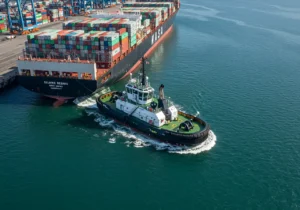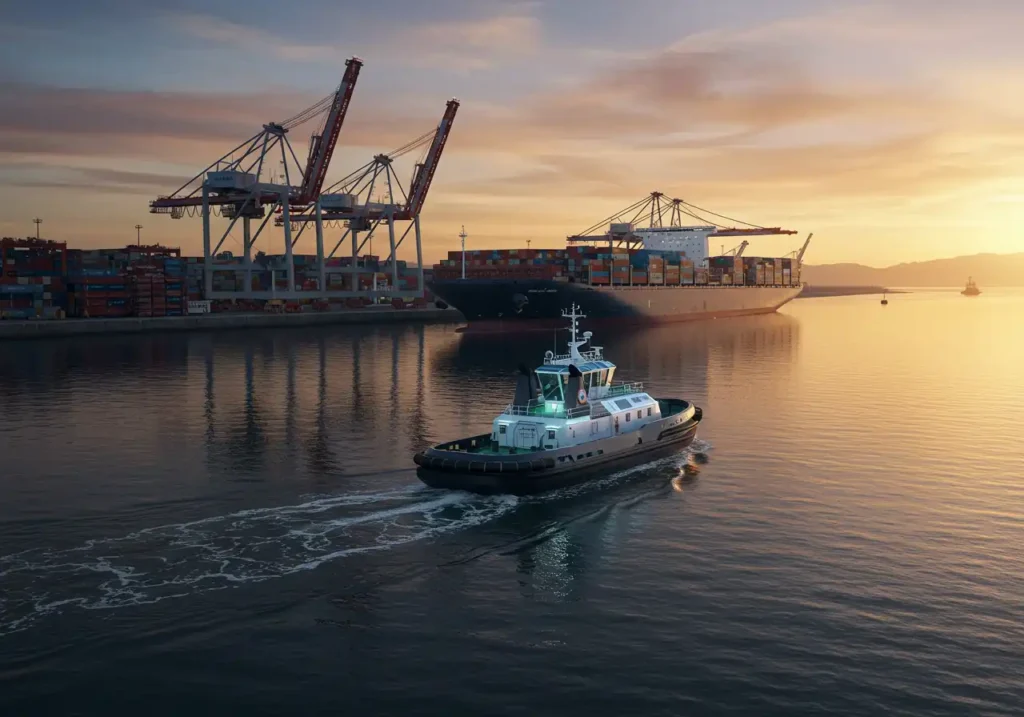California is known for its forward-thinking approach to sustainability and innovation, and the state’s ports are no exception. As part of the state’s broader efforts to reduce carbon emissions and lead the charge in environmental responsibility, California has been introducing electric tugboats into its maritime fleet. These vessels, which are replacing traditional diesel-powered tugboats, represent a significant shift towards cleaner, more efficient operations in one of the busiest and most vital industries in the state.
The move to electric tugboats is not just a matter of reducing pollution—it is also about improving operational efficiency and setting a new standard for sustainable maritime logistics. In this post, we will explore how these electric tugboats are revolutionizing California’s ports, the benefits they bring to the environment and economy, and what this shift means for the future of shipping and port operations.
The Role of Tugboats in Port Operations
 Tugboats play a crucial role in port operations. They are primarily used to maneuver large ships into place, assist with docking, and guide vessels through tight spaces in harbors and channels. Without tugboats, the safe and efficient operation of a port would be nearly impossible. Traditionally, these boats have been powered by diesel engines, which, while effective, also contribute to air pollution and greenhouse gas emissions—issues that are of growing concern for both California’s residents and policymakers.
Tugboats play a crucial role in port operations. They are primarily used to maneuver large ships into place, assist with docking, and guide vessels through tight spaces in harbors and channels. Without tugboats, the safe and efficient operation of a port would be nearly impossible. Traditionally, these boats have been powered by diesel engines, which, while effective, also contribute to air pollution and greenhouse gas emissions—issues that are of growing concern for both California’s residents and policymakers.
While they have been indispensable to the maritime industry, the environmental impact of diesel-powered tugboats has prompted California’s ports to look for cleaner alternatives. Electric tugboats offer a solution to these environmental concerns, providing the same level of power and maneuverability without the harmful emissions.
Environmental Impact of Electric Tugboats
Electric tugboats are a game changer for California’s efforts to reduce air pollution and meet its ambitious climate goals. Unlike traditional diesel-powered tugboats, electric tugboats produce zero emissions, eliminating pollutants such as nitrogen oxides (NOx), sulfur oxides (SOx), and particulate matter, which are harmful to human health and contribute to climate change.
By replacing diesel-powered tugboats with electric alternatives, California is significantly reducing the carbon footprint of its ports. This shift aligns with the state’s goal to achieve carbon neutrality by 2045 and supports its broader strategy to promote clean energy and green technologies across all sectors. Additionally, electric tugboats are quieter than their diesel counterparts, reducing noise pollution in port areas, which is particularly beneficial for nearby residential communities.
Electric tugboats are also more energy-efficient than their diesel-powered counterparts. With advancements in battery technology, these vessels are able to operate for extended periods without the need for frequent recharging, making them suitable for the demanding nature of port operations. This efficiency not only benefits the environment but also helps reduce operational costs over time.
Operational Efficiency and Cost Savings
Beyond environmental benefits, electric tugboats offer substantial operational advantages. One of the most significant benefits is their reduced maintenance requirements. Diesel engines require regular maintenance, including oil changes, exhaust system repairs, and more, which can be costly and time-consuming. In contrast, electric tugboats have fewer moving parts and no exhaust systems, resulting in lower maintenance costs and reduced downtime.
Additionally, electric tugboats are more energy-efficient, which translates into lower operational costs. While the initial cost of purchasing electric tugboats can be higher than that of diesel-powered vessels, the savings in fuel and maintenance over the long term make them a more cost-effective solution in the long run.
Electric tugboats also provide greater operational flexibility. Their electric propulsion systems offer precise control, making it easier to maneuver ships in tight spaces and during high-traffic port operations. This increased maneuverability improves the efficiency of port operations and reduces the risk of accidents or damage to ships and infrastructure.
Case Study: The Port of Long Beach
The Port of Long Beach, one of California’s busiest and most environmentally-conscious ports, is leading the way with the adoption of electric tugboats. In 2025, the port introduced its first fully electric tugboat, marking a significant milestone in its ongoing efforts to reduce emissions and improve sustainability.
The introduction of the electric tugboat has been met with great success. Not only has the vessel demonstrated the ability to maneuver large ships just as effectively as its diesel-powered counterparts, but it has also helped the port achieve its environmental goals. The Port of Long Beach is on track to meet its target of reducing greenhouse gas emissions by 80% by 2050, with the electric tugboat playing a critical role in this effort.
The success of this initiative at the Port of Long Beach has sparked interest from other California ports, many of which are now exploring the feasibility of electric tugboats in their operations. This case study demonstrates the potential for electric tugboats to become the standard in port operations across the state, setting an example for ports around the world.
Economic and Job Growth Potential
The shift to electric tugboats is not only good for the environment, but it also presents significant economic opportunities. The transition to cleaner, greener maritime operations is expected to create a range of green jobs in California, including positions in vessel manufacturing, electric infrastructure installation, and maintenance of electric propulsion systems.
In addition to job creation, the adoption of electric tugboats is driving innovation in the maritime industry. Companies involved in the development and production of electric tugboats are benefiting from California’s growing clean energy market, while local shipyards and ports are investing in the infrastructure needed to support this new wave of sustainable technology.
The economic impact of electric tugboats extends beyond the ports themselves. By driving the adoption of clean technology in the maritime industry, California is strengthening its position as a leader in the global green economy, attracting investment, and generating new business opportunities in the renewable energy and clean tech sectors.
The Future of Electric Tugboats in California
 The future of electric tugboats in California is bright. With more ports adopting electric vessels and further technological advancements on the horizon, electric tugboats are poised to become the standard in port operations across the state. The success of early adopters like the Port of Long Beach will likely encourage other ports to follow suit, accelerating the transition to electric maritime operations.
The future of electric tugboats in California is bright. With more ports adopting electric vessels and further technological advancements on the horizon, electric tugboats are poised to become the standard in port operations across the state. The success of early adopters like the Port of Long Beach will likely encourage other ports to follow suit, accelerating the transition to electric maritime operations.
As battery technology continues to improve, the range and efficiency of electric tugboats will only increase, making them even more suitable for large-scale, high-volume operations. With continued investment and innovation, California’s ports could become entirely electrified, setting a global standard for sustainable shipping and maritime logistics.
Conclusion
Electric tugboats are revolutionizing California’s ports, providing a cleaner, more efficient alternative to traditional diesel-powered vessels. These green innovations are helping the state meet its climate goals, reduce emissions, and improve operational efficiency. The adoption of electric tugboats is also creating new economic opportunities and driving job growth in the clean energy and maritime sectors.
California’s commitment to sustainability and innovation in its port operations is setting a model for other regions to follow, demonstrating how green technologies can transform industries and create a more sustainable future. As electric tugboats continue to make waves in California, they represent just one part of the broader shift toward cleaner, greener maritime operations that will shape the future of shipping for years to come.

